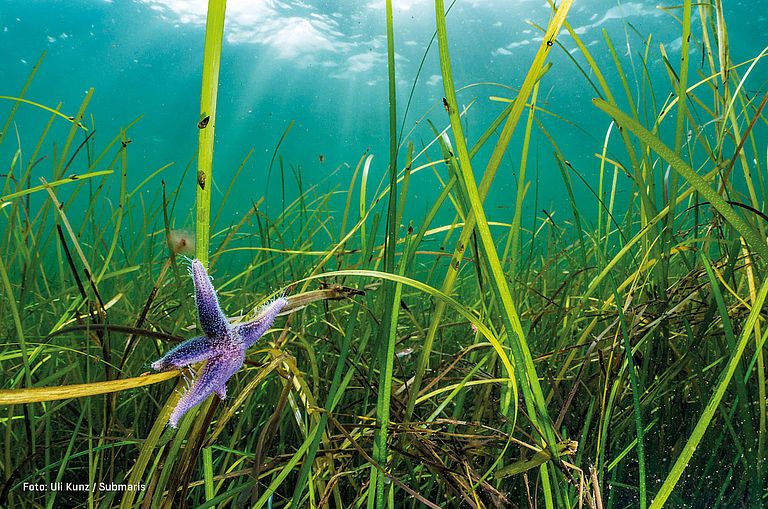Image of the Month: July 2021
Seagrass meadow with starfish in the Kiel Fjord near Falckenstein
Seagrass meadows are not only an important habitat for many marine animals, but they also store carbon through the production of their biomass and by filtering out fine organic sediment particles. Their photosynthesis binds CO2 dissolved in the water, which can reduce the amount of anthropogenic CO2 from the atmosphere and store it as "blue carbon" in the soil for a longer period of time. Seagrass meadows in the Baltic Sea cover an area of about 285 square kilometres and store an average of 2,700 grams of carbon per square metre. In the process, they enrich the seabed with organic particles equivalent to between 26 and 52 grams of carbon per square metre per year, which is 30-50 times higher than in comparable forest-covered ecosystems on land. The "Seagrass Blue Carbon" project at GEOMAR as part of the Helmholtz Climate Initiative is investigating how much CO2 from the atmosphere the seagrass meadows in the German part of the Baltic Sea store, what contribution they make to the carbon balance in Germany and how the stocks can be protected and lost meadows renatured.
Photo: Uli Kunz / Submaris



